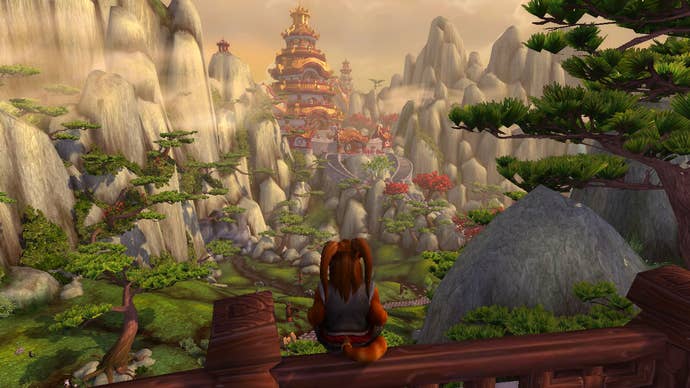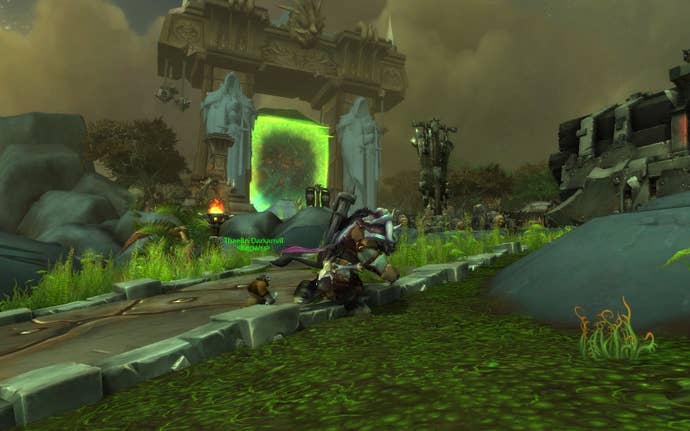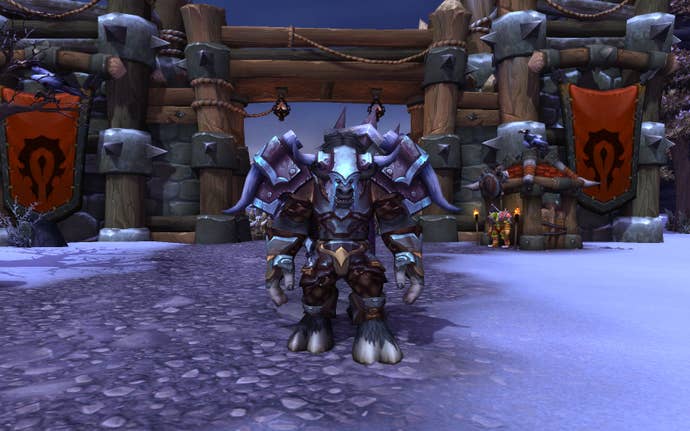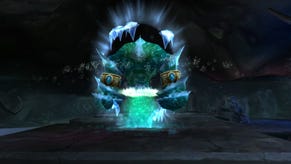The 15 Best Games Since 2000, Number 3: World of Warcraft
Despite being almost 11 years old, World of Warcraft still remains the most-played MMORPG. Here's why.
This article first appeared on USgamer, a partner publication of VG247. Some content, such as this article, has been migrated to VG247 for posterity after USgamer's closure - but it has not been edited or further vetted by the VG247 team.
We're nearing the end of our daily countdown of the 15 Best Games Since 2000. Want to read more? Check out the rest of the entries here.
Jaz Rignall, Editor-at-Large
The cultural phenomenon that is World of Warcraft needs little introduction. Launched in November 2004, and still going strong with some 5.6 million monthly subscribers, this massively popular, massively multiplayer game evolved and essentially defined the modern-day MMORPG.
Played by an audience of some 12.5 million during its peak in 2008, and having earned developer Blizzard in excess of $10 billion so far – making it the biggest-grossing game of all time – World of Warcraft is a juggernaut that has only recently shown signs of finally slowing down. With almost 100 million accounts created so far, what makes it so popular? Many things.
It's the sheer size, scope and complexity of this multi-faceted title that draws in such an incredibly broad audience. Simply put: there are a vast number of things to do in this game that appeal to a wide spectrum of gamers, from hardcore PvPers fighting nightly to the most casual of Sunday afternoon players pottering around for a couple of hours a week.

WoW's fundamental gameplay involves selecting and customizing a character – a damage-dealer, healer, tank or hybrid variant. The player then levels up that toon by exploring the lands of Azeroth, completing open world quests – many of which articulate stories and background to the game – and participating in five-player dungeons. There are raids too. These are more complex and involved dungeons that can take several hours to work through, and require anywhere from 10 to 25 players. Back in the early days of WoW there were even 40-player raid dungeons. Those have since been canned due to the complexity of organizing such a large group. Then there's the PvP side of the game, which features battlegrounds involving teams of up to 40v40, plus 2v2, 3v3 and 5v5 arenas. And that's just the basics.
Additional expansions have added features like a farm, essentially your own in-game house, a garrison and shipyard, which you can build and customize, and a host of different crafting systems that enable you to make items like armor, weapons, jewelry and augments for your character. There are also many mounts to find and collect, as well as hundreds of personal pets that you can capture, level up and use to battle in competition with other pet owners, Pokemon-style.

And then, of course, there's the vast game world itself. The original "vanilla" World of Warcraft introduced two very large major landmasses to explore, and since then, the Burning Crusade, Wrath of the Lich King, Mists of Pandaria, and Warlords of Draenor expansions have all added big new regions to the game, each with their own capital cities and many new zones, plotlines, and landscape features. The third expansion, Cataclysm, didn't add any new regions to the game, but did add new zones to the two original vanilla lands, as well as extensively modifying them.
What helps keep players at their keyboards is the fact that Blizzard continually updates the game with content patches. These appear every few months and contain refinements to the existing game, but, more importantly, add new dungeons, raids, and gear for characters to earn. That, combined with the regular expansions appearing every two or so years on average helps keep the game fresh enough that it continues to hang onto its audience some 11 years after its launch – something that few other games can boast. Even with its gradual, inevitable decline, the game currently still has more paid subscribers than any other MMO.

But bottom line, it's the gameplay that is the secret to World of Warcraft's success. It features a level of difficulty that can be completely tailored by the user. From simple dungeons where even a novice who's not fully familiar with the game can pull their own weight to highly complex, advanced raids that challenge the very best of the best WoW players, World of Warcraft has a flexible difficulty setting that lets players find and stay within their own limits. It's an exceptionally clever system that's flattering to pretty much anyone who plays it.
How many more years World of Warcraft has in it remains to be seen, but with yet another expansion on the horizon, there's no sign of the game letting up anytime soon. Sure, its subscriptions might be on the wane, but over five million players are still paying to play the game, even now. No, WoW is here to stay for a good while longer, and I'm sure it'll have a few twists to its tale as of yet. Put it this way: I was an avid player of the game up until very recently, but I'll certainly re-up my subscription to play the game again when the new expansion arrives, even though it might not keep me occupied every day like the game used to.
Ultimately, World of Warcraft is a seminal title; an MMORPG unlike any other. Its sheer size, scope and gameplay is unmatched by anything else out there, even over a decade after its release. That's because few, if any other companies will ever have the resources to be able to create a game that can truly compete with it. We'll probably never see anything quite like it again.


_ddwYK80.png?width=291&height=164&fit=crop&quality=80&format=jpg&auto=webp)













